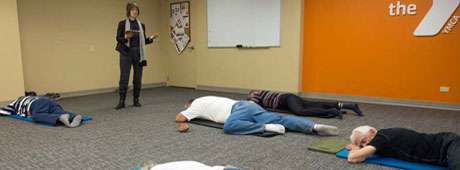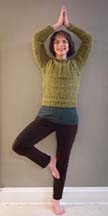No products in the cart.
Body Lessons

Retraining the Brain through Movement
By Barbara Morgan, Photos by Kurt Martyn
Relaxing on the couch after work, studying the Idaho Statesman, you hear an annoying rattling, but there’s no one else in the room. You put the paper down and look around. The sound is gone. A month later, you pick up your toothbrush and your right arm doesn’t move fast. You check your biceps in the mirror and see the same reassuring bulge on both sides. Everything is fine again until a hovering office colleague asks why you’re mad. You tell her you’re perfectly fine with her, but she won’t leave it alone. She says she can see it in your face. And furthermore, you don’t swing your right arm when you walk, so you must have had a stroke. You want to tell her off but instead go out of your way to smile. And swing your right arm.
You worry from time to time. Could you be taking stress to bed with you? Your wife says you yell in your sleep. You see the doctor who does a complete history and physical and gets a CT scan. He finds nothing unusual but fixates on your infrequent bowel movements.
“Get more rest,” he says. “And don’t forget to exercise.”
Three years pass. You have a resting tremor on your right side, but when you pay attention to it, the tremor is gone.
It embarrasses you, so you sit on your hand at work to make it stop but you’re sure they all talk about it. Your constipation is worse, your dreams more vivid, and you’ve punched your wife during a dream about a burglar. You may have come to my neurology office in Boise. And I may have confirmed what your doctor suspects. You have Parkinson’s disease.
In graduate school I studied anthropology, the science of Homo sapiens sapiens, and pondered the wonders of human locomotion. Non-primate mammals run around on earth with ease, using their four-wheel-drive legs and horizontal-driveshaft spines. But our primate ancestors lived in trees for safety, brachiating limb over limb. Then they evolved prehensile, opposable thumbs, came down out of their tree houses, and made tools. We don’t know for sure which came first, chicken or egg. But we do know there was a correlation between fancy tools and bigger brains. The more tools they invented, the bigger their brains became, and the more differentiated the functions of their upper limbs from their lower limbs. Non-human primates knuckle-walked, but our clever ancestors walked upright on earth, hunting in bands, the ones with the biggest spears in command.
This content is available for purchase. Please select from available options.
Purchase Only
Purchase Only

